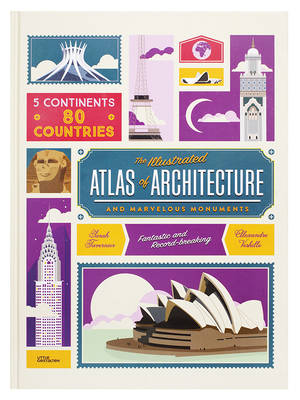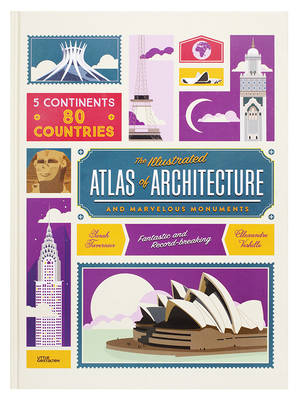
- Afhalen na 1 uur in een winkel met voorraad
- Gratis thuislevering in België vanaf € 30
- Ruim aanbod met 7 miljoen producten
- Afhalen na 1 uur in een winkel met voorraad
- Gratis thuislevering in België vanaf € 30
- Ruim aanbod met 7 miljoen producten
Zoeken
The Illustrated Atlas of Architecture and Marvelous Monuments
5 Continents. 80 Countries
Alexandre Verhille, Sarah Tavernier
€ 12,95
+ 25 punten
Omschrijving
This unique architecture atlas shows the most remarkable buildings in the world. Children and adults will marvel in amazement. Mali, in North Africa, is home to the largest building made out of clay; the structure only took one year to complete. For the construction of Neuschwanstein Castle, 465 tons of marble were hefted to the Alps to the building site. The Atomium in Brussels boasts the longest escalators in Europe. The largest mosque in the world is as big as 56 football fields. The Illustrated Atlas of Architecture and Marvelous Monuments presents a world of breathtaking buildings and their incredible stories through illustrated maps and engaging factsheets. Sarah Tavernier and Alexandre Verhille have already deftly shown with Legendary Routes of the World that they are experts in showcasing the biggest and the best. Now, for The Illustrated Atlas of Architecture and Marvelous Monuments, they researched the longest bridges, tallest towers, the most impressive cultural sites, and plenty of curiosities. Exciting facts are woven together with a myriad of architectural styles; the material feats are skillfully and artfully placed upon bold maps, situating the constructions within a geographic context.
Specificaties
Betrokkenen
- Auteur(s):
- Illustrator(s):
- Uitgeverij:
Inhoud
- Aantal bladzijden:
- 48
- Taal:
- Engels
- Reeks:
- Geïllustreerd:
- Ja
Eigenschappen
- Productcode (EAN):
- 9783899557756
- Verschijningsdatum:
- 14/09/2016
- Uitvoering:
- Hardcover
- Formaat:
- Prentenboek
- Afmetingen:
- 274 mm x 373 mm
- Gewicht:
- 861 g

Alleen bij Standaard Boekhandel
+ 25 punten op je klantenkaart van Standaard Boekhandel
Beoordelingen
We publiceren alleen reviews die voldoen aan de voorwaarden voor reviews. Bekijk onze voorwaarden voor reviews.








